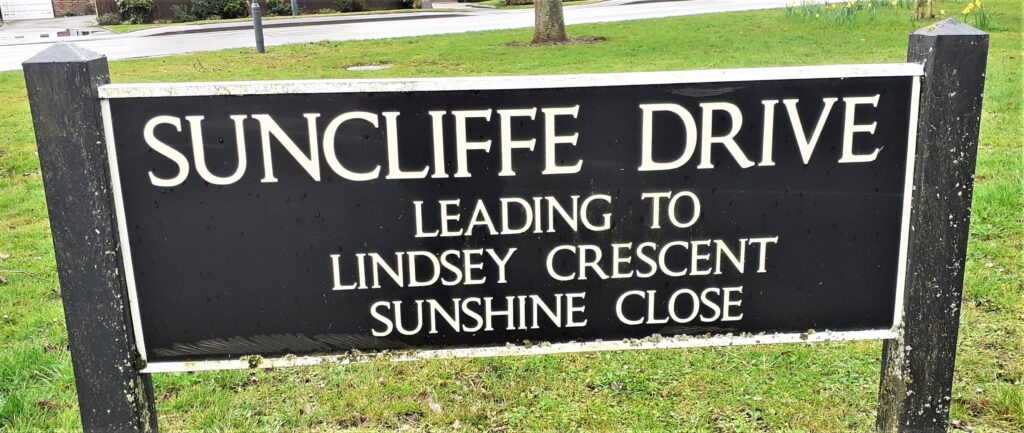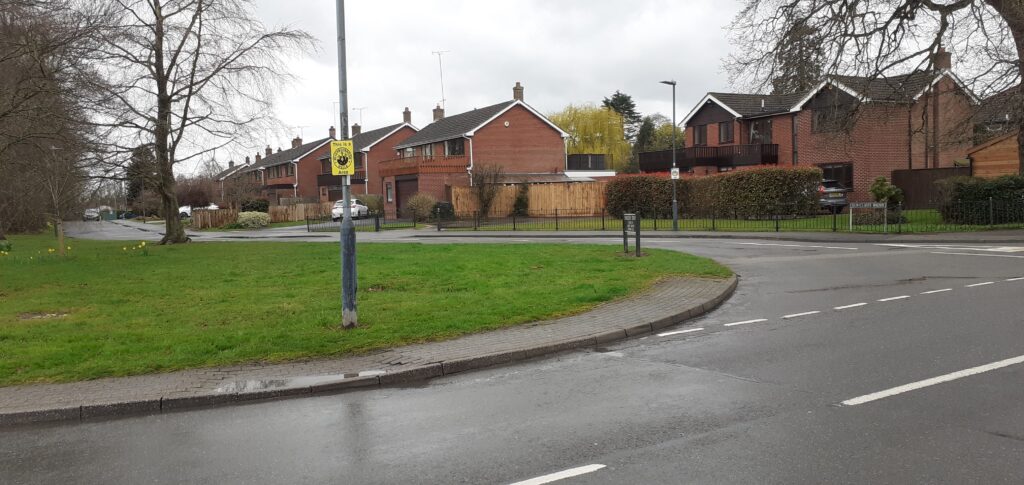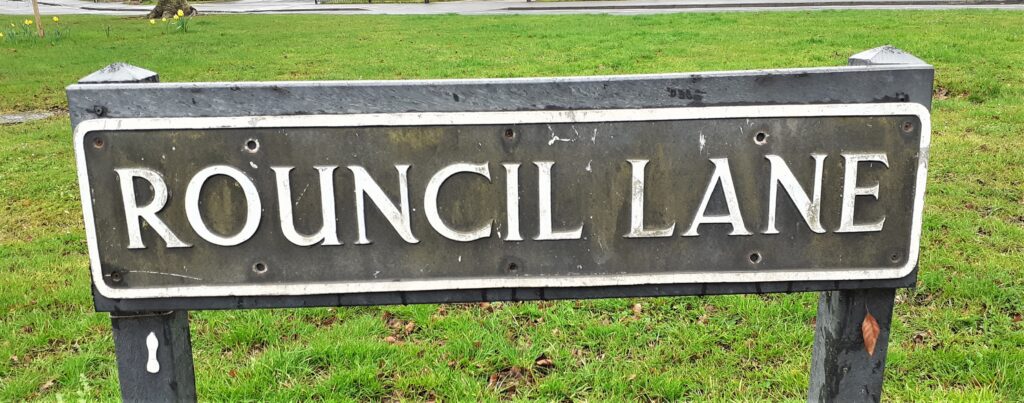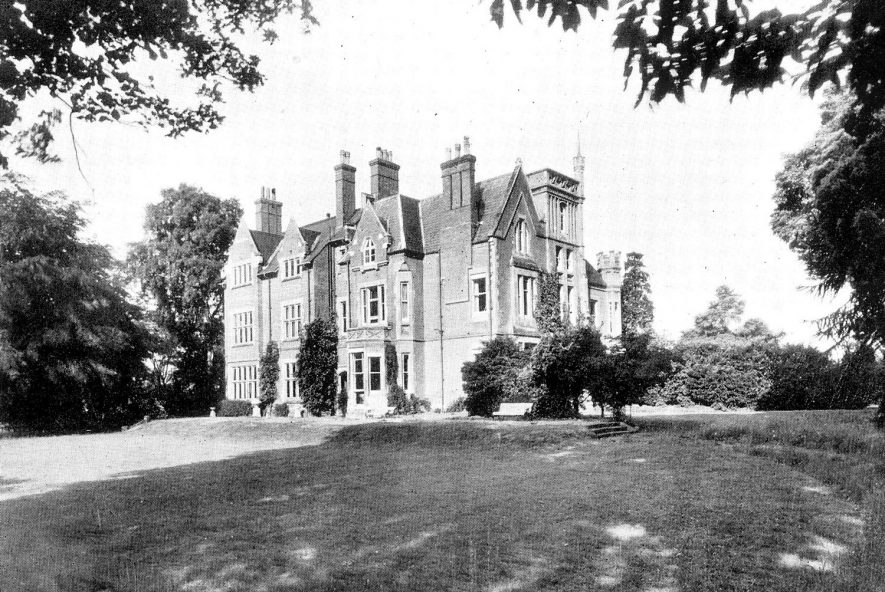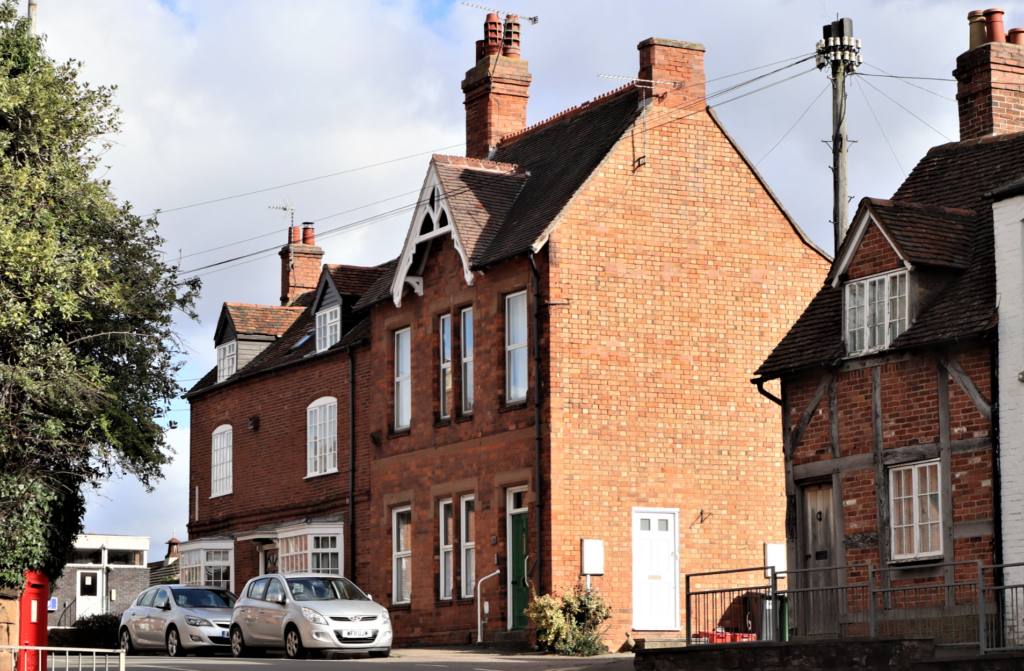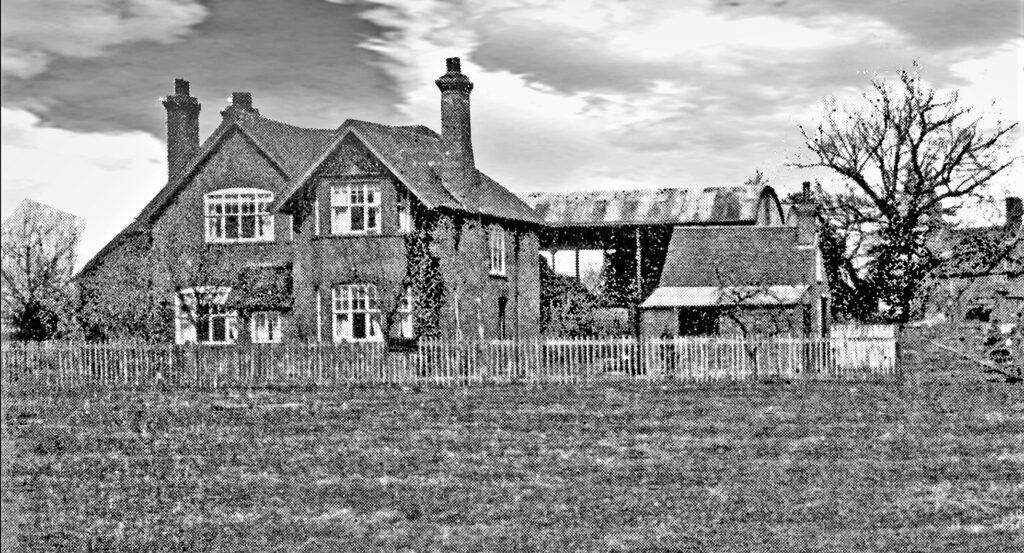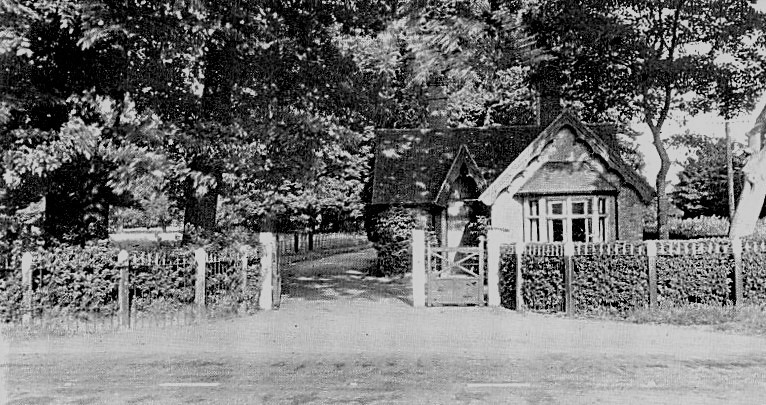The afternoon of Wednesday 21st October 1914 was just a normal day for Miss Annie Maria Stanyer and her maid Miss Hawkins. They had set out from Fernhill Farm in Rouncil Lane on a horse and dog-cart to do some shopping in Kenilworth. But this ‘normal’ day would end in tragedy.
Miss Stanyer had become a well-known lady around Kenilworth, and resided with her brother Fred Stanyer for the past three years at Fernhill, coming here from her hometown of Birmingham.
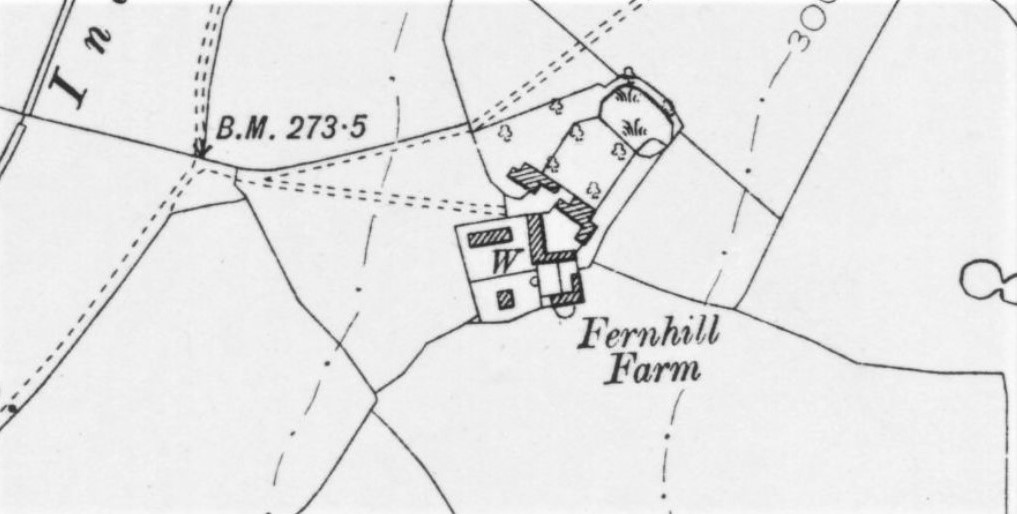
After doing some shopping in the town they were returning home along Warwick Road when the horse was startled by a passing train at St John’s. The animal ‘bolted’ and eventually crashed into the iron railings outside the lodge gates of Rouncil Towers near to the junction of Rouncil Lane.
Thrown from Cart
Both ladies were thrown from the cart, but unfortunately Miss Stanyer fell onto the railings, her throat catching one of the spikes. She was left suspended. The lodge-keeper’s wife was at home at the time of the accident but she was unable to get promptly to Miss Stanyer because the horse and cart had blocked the gateway. But Miss Hawkins succeeded in lifting her mistress from the spike. But rapid blood loss had rendered her unconscious. Dr. Asplen arrived within a few minutes of the accident but he could do nothing to save her. Inspector Parkinson had the body removed to the ‘mortuary’ at the Police Station in Albion Street.
The Inquest
The Coroner
The inquest took place on Friday 23rd October at the Council House at Upper Rosemary Hill, presided over by Mr. Ernest Hadow, Coroner for Mid- Warwickshire. The foreman of the jury was Mr W. Bishop.
Brother Fred Stanyer
Mr. Fred Stanyer, of Fernhill farm, Rouncil Lane, identified the body as that of his sister, who kept house for him and she was 42-years-old. On the day she had left home with a horse and dog-cart and was good at driving. He said the animal had been broken-in to the harness about six months ago and was quiet and shy of traffic. He had taken it to the railway station recently with no problems. However, It did not like electric tramways, the dog-cart was a high one.
Evidence of Miss Hawkins
Witness Lynda Hawkins, maid at Fernhill Farm, told the inquest that she had been out twice before with the horse but not alone with Miss Stanyer. On Wednesday at about 4.30pm she had gone out with her mistress in the dog-cart. When they got to Waverely Road the horse was a bit restless. Witness got off the cart to go into Smith & Sons to purchase some goods, and when she returned the cart had moved a few yards, Miss Stanyer said the horse had been startled by a train at the Station, but she did not seem nervous. They then went to the Square and witness went into another shop whilst Miss Stanyer remained with the cart. After the purchases had been put into the cart, witness got on and they headed back home along Warwick Road. On passing the railway bridge near St. John’s the horse became frightened and ‘bolted’ at high-speed. Witness thought it must have been because of a passing train. Miss Stanyer called upon the witness to assist her, and both pulled hard on the reins. On approaching the Rouncil Lane junction, they still could not stop the horse, and Miss Stanyer said; “Let us turn it round the corner”. They both pulled on the right-hand rein but could not get the horse fully round the corner. It ran onto the grass under the trees and headed straight towards the lodge. After the impact the horse fell down, throwing both of them out of the cart. Witness was unclear whether the horse had hit the gate or not, or whether she herself had hit the gate or not, because she was dazed for a few seconds. When she recovered she found herself next to the feet of Miss Stanyer, and that’s when she found her caught on a spike, her hands were holding onto the railings and her face was lifted up. Her feet were off the ground, so Miss Hawkins lifted her down.
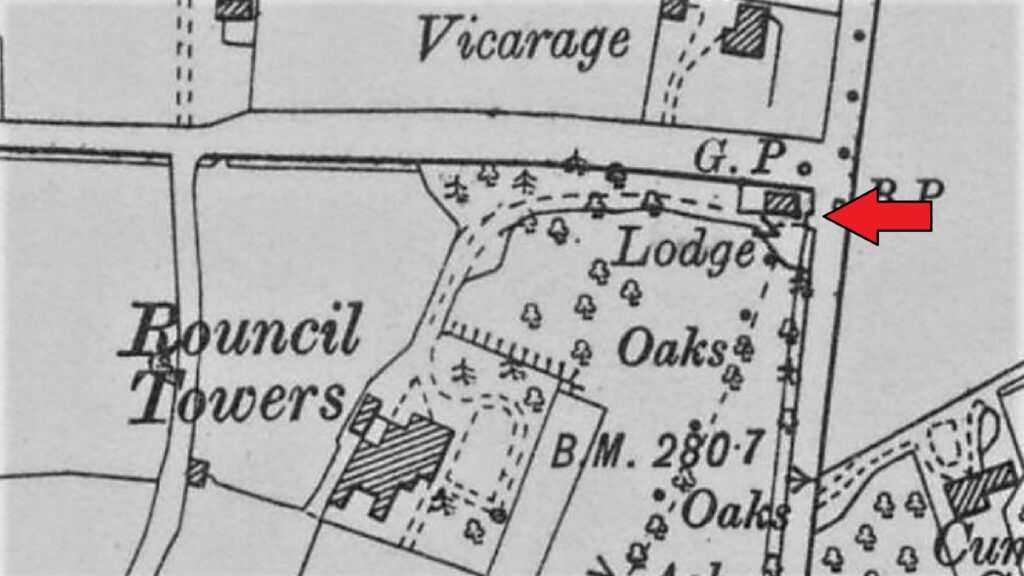
Witness James Prestidge
On Wednesday at about 5.30pm, Henry James Prestidge was on his way home to Warwick on his bicycle. He was near to the railway bridge at St John’s, when behind him, he heard what sounded like a ‘runaway’. He saw it was a horse going at high speed with two women in the cart. He had to pull-over to avoid being hit. He could see both women were holding the reins. He saw the cart go into Rouncil Lane and then onto the side of road, and ran straight into the fence near the lodge. The horse seemed to bounce back, and fell underneath the cart, the shafts of which were over the fence. The horse lay on the ground quietly. Witness gave all the assistance he could.
Medical Evidence
Witness Dr. Asplen, had been called to the incident and on arrival Miss Stanyer was lying near to the lodge, so he had her taken inside. By this time, the horse and the cart had been taken away. He had previously seen her around town on the cart, and the horse seemed a little ‘fresh’. On examination, he found a punctured and incised wound below the angle of the right jaw. The spike had perforated the mouth and severed the corotid artery and a jugular vein. The deceased had bleed to death, she had just stopped bleeding when witness arrived. The spike on the fence was found and a lot of blood was present. He said that she was lucky to survive as long as she did.
Mortuary Needed in Kenilworth
Dr. Asplen took the opportunity to call attention to the pressing need for a proper mortuary in Kenilworth. The coroner said that he had come across this subject many times before and agreed with him. The coroner asked why he should mention it regarding this case? Dr Asplen explained that the lady was covered with blood and a considerable amount of washing was needed to remove this, and there were no proper facilities to do this inside the coach-house at the Police Station, where the body was taken by Inspector Parkinson. The place was also overlooked by surrounding houses and therefore he thought the need for a mortuary was very pressing.
The Verdict
The coroner, In summing up, said he trusted the jury would take notice of Dr Asplen’s remarks and make a recommendation on the subject of the mortuary.
The jury returned a verdict of ‘Accidental Death’ on Miss Stanyer, and expressed through the foreman, their sympathy with the relatives of the deceased lady. The foreman also added that he endorsed what Dr. Asplen had said in regard for the need of a mortuary. They proposed that a requisition be sent to the Kenilworth Urban District Council (KUDC) for the pressing need for one in the town.
Mortuary Matters & Kenilworth Urban District Council
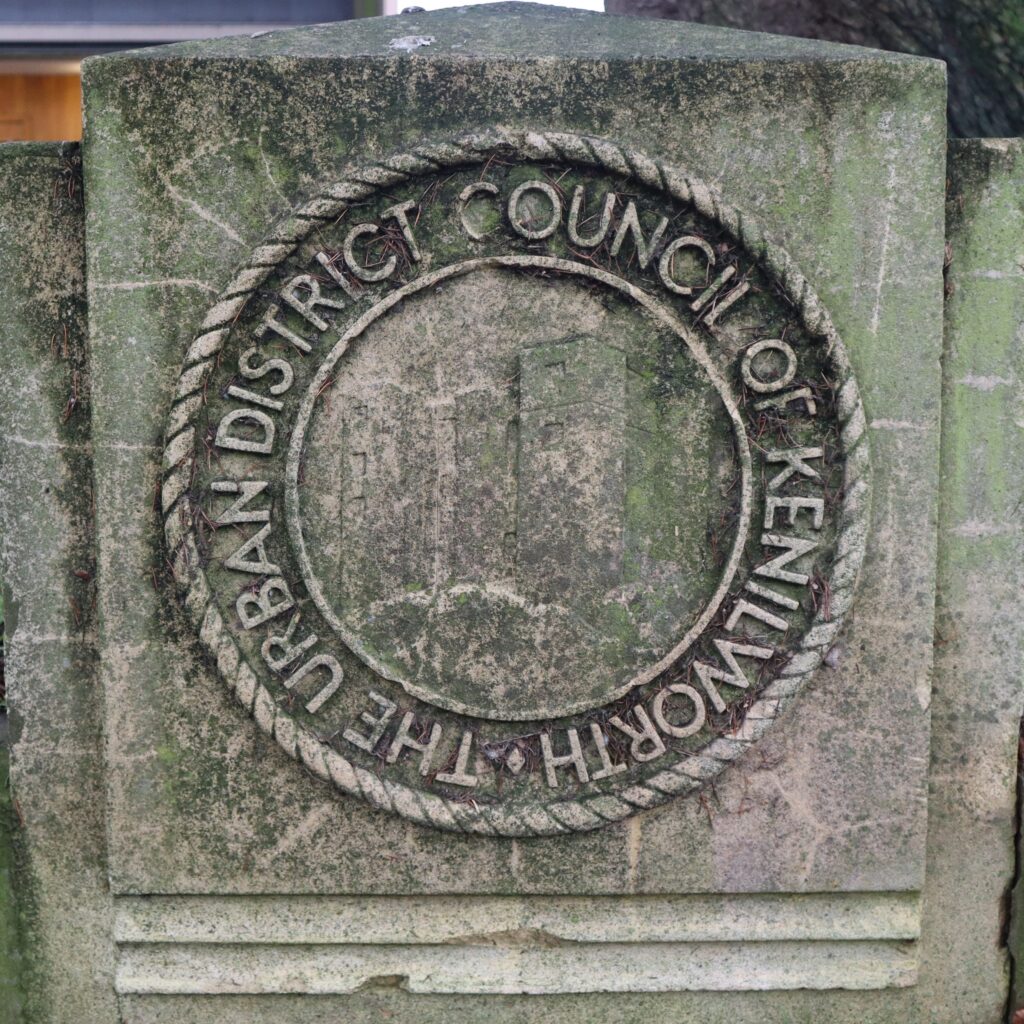
The council had discussed the subject of a mortuary for many years but nothing seemed to have ever materalised. At a meeting in February 1910, the Coroner and Clerk of the KUDC, Mr. J. J. Willington-Wilmhurst had expressed concerns on this matter previously. He said that during an inquest only recently, the question of a public mortuary was mentioned. The jury unanimously agreed that the matter should be taken into consideration by the authority who were in a position to provide it.
It was pointed out by Dr. Tangye, the County Medical Officer of Health, that a mortuary where bodies could be taken and post-mortem examinations undertaken would be a great convenience to the town. Councillors, Riley, Nelson and Perkins spoke out for the need of such a facililty. Cllr Nelson suggested it might be covered by public subscriptions. Cllr Jackson gave notice that he would move at the next meeting of the council that the sum of £100 be allowed for the building and equipment for a public mortuary.
By 1916, two years after the tragedy at Rouncil Towers, the councillors were still at odds with one another about the provision of a mortuary. The main issue was money – and who should pay for it. Some councillors believed it should not be paid for by public money, others disagreed. At a meeting in April, Cllr Jackson did not mince his words with his fellow councillors, saying that he had brought this subject up over the last 20-years, and nothing has ever been done. He thought it was a disgrace that bodies should be put in a coach-house where post-mortems also took place. He said it was about time this matter was thrashed out once and for all. He understood the cost of a mortuary would now be as much as £150, and he considered it was the duty of the council to provided such a place. But the problem was that the council had no money, and it was suggested they get a loan to build it.
What Happened to Rouncil Towers?
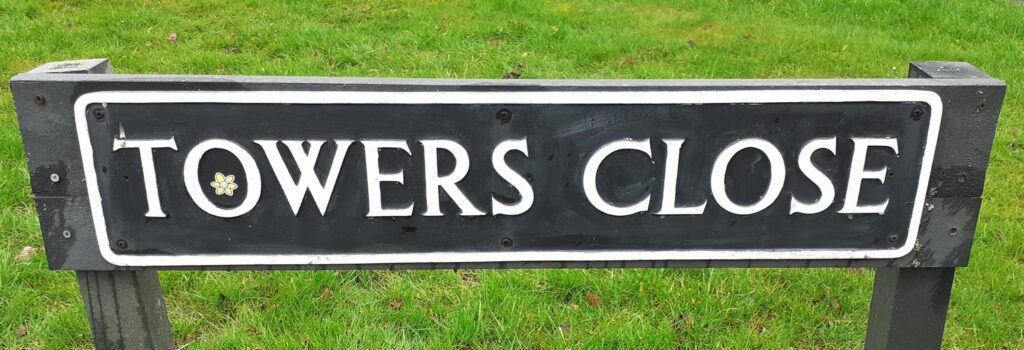
The ‘Towers’ was eventually demolised as part of the re-development of the area in 1961-63 by building company, Sunshine Homes. Reminders of its history can be seen in the street names: Towers Close, Sunshine Close, Suncliffe Drive and Lindsey Crescent are the four roads on the site. It’s a pity that Annie Stanyer could not have been remembered on a street name in some way but the people responsible for naming streets were probably unaware that the tragedy ever took place.
